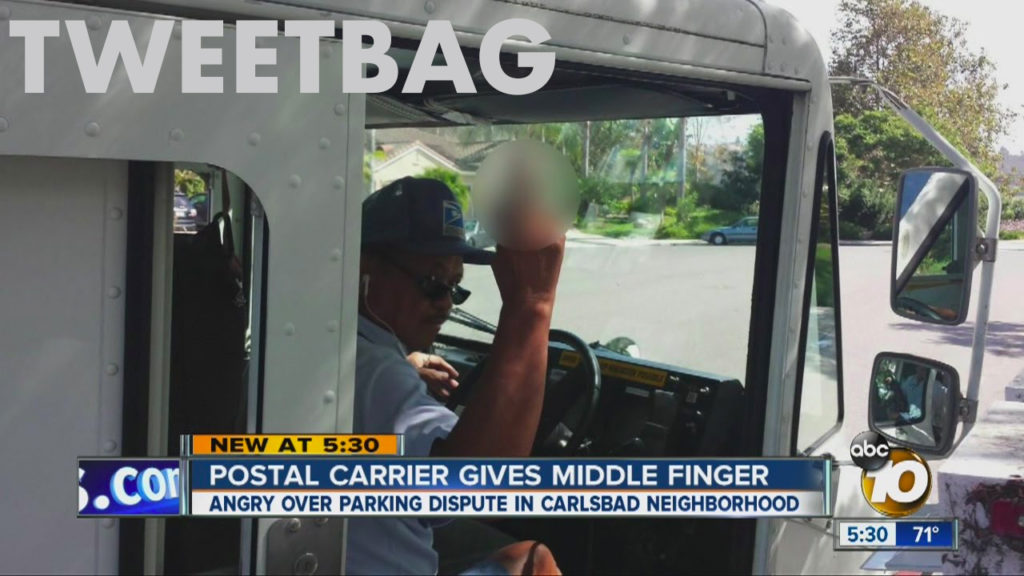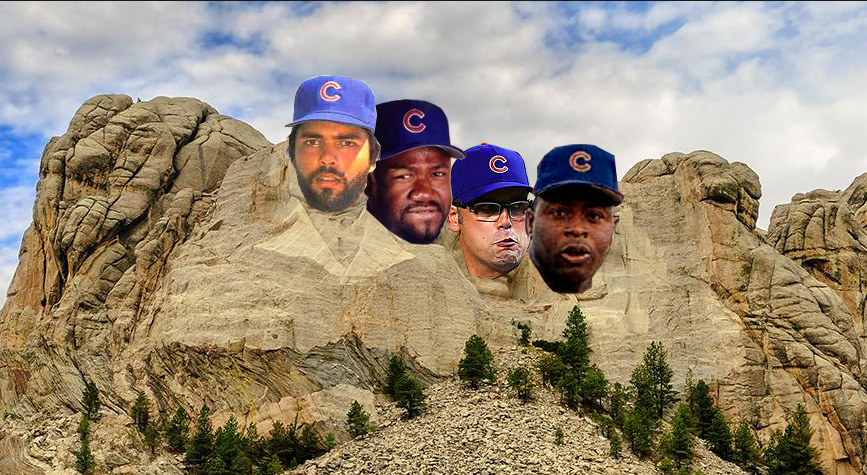
Sometimes, you get a Tweet that demands more than a 280 character response. When the subject is worst closers in Cubs history, how can you avoid it?
So, we open up the old Tweetbag for this from @FreedmanMatthew:
I see that Gregg is actually pretty similar to Antonio Alfonseca. Do they both make your Mt. Rushmore of awful Cubs relievers? There needs to be a spot for Mel Rojas, too.
— Matthew Freedman (@FreedmanMatthew) June 10, 2019
So many awful closers, and so little time. A few immediately come to mind.
Carlos Marmol – Yes, at the end he was brutal, but Marmol was too good when he was good to make this Mt. Rushmore. From 2007 when they made him a full-time reliever until 2011 he struck out 540 guys in just 382 innings. Sure, he somehow hit 39 guys and threw 23 wild pitches in that same time. In his first year as a primary closer he struck out 16 batters per nine innings. Sixteen! In his first full-time season as a reliever in 2007 he had an OPS-plus of 325. Three-hundred twenty-five! 100 is average. I can almost forgive him for his blown save down the stretch against the Cardinals in 2011 which helped them sneak into the playoffs the last time they won a World Series.
LaTroy Hawkins – Did you know LaTroy only pitched a season and a half for the Cubs? He really crammed a lot of memorable failure into such a short period of time. The fact is, when used in his regular spot as a set-up man, he was good. But pressed into service as a closer down the stretch in 2004, not so much. He gave up the crippling Victor Diaz homer in that Saturday afternoon collapse at Shea Stadium. But that was no surprise. From August 21 to the end of the season he was given 11 save chances and he blew five of them. That doesn’t even include the most spectacular blown save I’ve ever seen, which happened in 2005 not long before he was traded to the Giants.
Entrusted with a 2-1 lead after Mark Prior threw eight brilliant innings, LaTroy gave up two singles and a walk to load the bases, but got Placido Polanco to line out to him for the second out, only to throw to first to try to double off Jose Offerman at first, hit Offerman’s helmet with the throw, watch it bounce all the way into the crowd, which by rule scored the runners from third and second and the Cubs lost 3-2. LaTroy was the worst, but he’s not going on Mt. Rushmore.
Dave Smith – He was old and bad when they signed him and he pitched like it. Then he died.
Turk Wendell – He actually was 22-for-26 in save chances for the Cubs. But yeah, he was still bad. He still wore that weird pelt around his neck, jumped over the foul lines and brushed his teeth between innings. He was quirky just to be quirky.
Goose Gossage – Incredibly, he blew 10 of the 23 save chances he had in 1988. And, even though he looked 60, he was apparently only 36 years old.
Bob Scanlan – He led the closer-less 1992 Cubs with 14 saves in 18 chances. Not bad considering Jim Riggleman made him warm up in 163 of the team’s 162 games. Somehow.
Terry Adams – If you can’t quite remember Terry Adams, just picture a large man with a perfectly round head that’s twice the size it should be.
Dick Tidrow – Some poor schmuck had to be the closer after the Cubs sent Bruce Sutter to the Cardinals for no apparent reason. That poor schmuck was Tidrow. Mostly. He led the Cubs with nine saves. If that seems pretty low, remember that 1981 was a strike shortened season with a weird season where playoff teams were determined in two halves. The Cubs only won…get this…38 games that year. They were 38-65.
But for me, it came down to these four. The worst of the worst.
Calvin Schiraldi – If you base this selection merely on his numbers as a closer four saves in nine chances he doesn’t stack up. But you also have to take into account the Cubs traded Lee Smith to the Red Sox to get Schiraldi. At the time, Smith had 160 career saves and had averaged 32 per season the previous five years. He was 29 years old when general manager Jim Frey decided he was done (even though he was coming off a season in which he set his then career high of 36 saves and made the All-Star team. Smith would pitch ten more years and rack up 318 more saves. Schiraldi was a key part of the 1986 Red Sox bullpen, racking up 55 strikeouts to only 15 walks in 51 innings. His disastrous attempt to save game six of that year’s World Series made him a pariah in Boston, despite a fairly decent 1987 season. The Cubs tried him as a starter in 1988 and he underwhelmed, so they put him in the bullpen the next season, which marked the arrival of Mitch Williams. Frey had traded Smith to get Schiraldi, and that hadn’t worked, so then he traded Rafael Palmeiro to get Williams. If Palmeiro hadn’t failed a drug test in 2005, you could have argued that the Schiraldi trade cost the Cubs two Hall of Famers. Schiraldi’s one season as a reliever with the Cubs resulted in 60 hits allowed and 50 walks in a Brad Brach like 78 innings. If all of this seems like I’m going out of my way to put Calvin’s dopey mug on this Mount Rushmore, well, you’re right.
But, there was one redeeming feature of Schiraldi’s Cubs tenure. He was traded on August 30, 1989 in a waiver deal with Darrin Jackson to the Padres for Marvell Wynne and Luis Salazar, and Luis Salazar was part of this incredible moment in Cubs’ history:
You have to trust me, in 1989 beating the Cardinals in September to stay in first place was just like it’d be today, times 12,000.
Antonio Alfonseca – Was it the enormous beer belly, the 12 fingers and 12 toes, the weird pre-Pedro Strop mound celebrations, or the glorious “El Pulpo” nickname that endeared us to this really, really bad reliever? For me, it was probably when he got thrown out of a game he wasn’t even pitching in. In 2003, the Cubs officially stamped their notice to the league that they were for real in a four-day, five game series at Wrigley against the Cardinals. The Cubs won four of them, three in pretty epic fashion, and should have won the only one they lost. Late in the game, Moises Alou hit what appeared to be a game tying double down the left field line, but it was ruled foul. Then, this happened.
I enjoyed that Chip got the initial call wrong, as he has always been wont to do.
When a belly bump is the highlight of your tenure with a team, you were bad. El Pulpo blew nine of his 28 save chances in 2002 and got replaced by Sweaty Joe Borowski in 2003.
Kevin Gregg – The Cubs had won back to back NL Central championships in 2007 and 2008, and in some weird cost saving moves they traded second baseman Mark DeRosa to make room for the ill-fated acquisition of Milton Bradley to become more “left-handed”, and let Kerry Wood go to Cleveland via free agency. Instead of making Carlos Marmol the closer, they traded minor league pitcher Jose Ceda to the Marlins for career mediocrity Kevin Gregg. He was just that for the Cubs, and despite that, they were in first place on the morning of August 2, and took a one run lead into the ninth in Florida. With one out, Gregg gave up a homer to Dan Uggla, one pitch later he did this:
What an asshole. The Cubs finished the season 7.5 games behind the Cardinals.
Gregg came back in 2013 when the rebuilding Cubs were in no mood to win games. His efforts contributed to them drafting Kyle Schwarber in 2014. He also nearly got cut in September for complaining to the media when Dale Sveum said he’d be giving one of the new guys, Pedro Strop, some save chances. Theo was not amused, and made Gregg apologize or be immediately waived.
Mel Rojas – If you could put only one person on the mountain, it would be Mel, the worst closer in Cubs’ history. Rojas, who happens to be Moises Alou’s cousin, had done a nice job as John Wetteland’s set-up man in Montreal and after Wetteland went to the Yankees posted two solid, if unspectacular seasons as the Expos’ closer. The Cubs decided he was elite, and signed him to a three year deal worth nearly $15 million, which was a lot at the time. His first, and as it turns out, only Cubs’ season was 1997. You might remember it as the year the Cubs started 0-14 and were mathematically eliminated by tax day. Mel was a key part of that horrendous start. He gave up three runs in his first game as a Cub, blew three of his first five save attempts, and ended up converting only 13 of 19 before being dumped to the Mets in an August waiver trade. That trade turned out strangely good for the Cubs as they dumped Brian McRae, Turk Wendell and Rojas on the Mets and got back Lance Johnson, Mark Clark and…well, OK, not all of it was great…Manny Alexander. Rojas would be traded the next season to the Mets for Bobby Bonilla and the Mets are still paying Bonilla’s contract. Chaos was always left in Mel’s wake.


